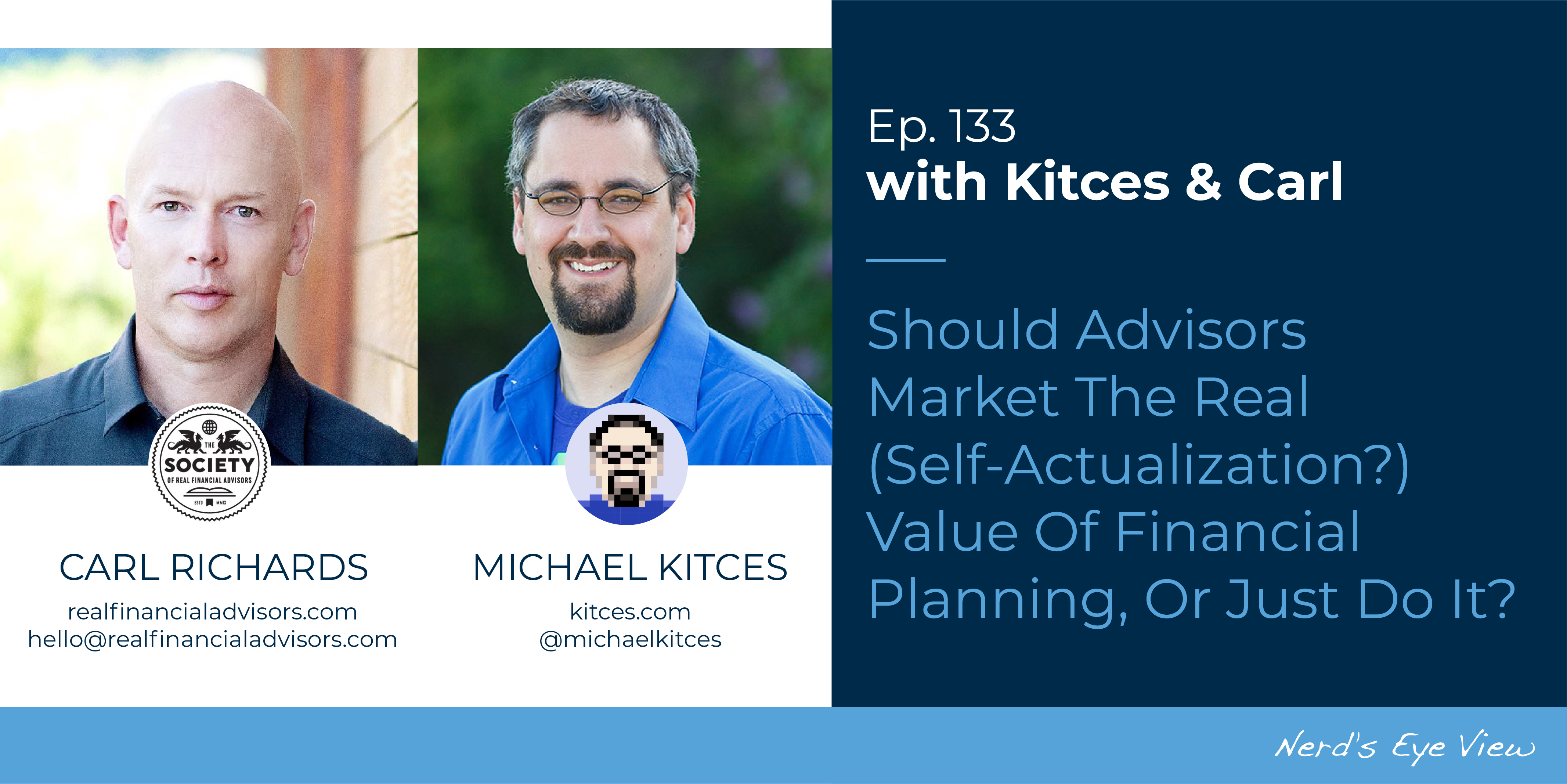For many financial advisors, the traditional way of doing business has generally been based on a transaction-based service model involving functional solutions to clients’ practical problems. In more recent years, though, advisors have begun to focus on developing stronger and more meaningful relationships, recognizing the advantage of better understanding clients’ values and priorities when it comes to solving for their long-term goals. And with this growing realization, many advisors are also recognizing the profound impact they have on their clients’ lives beyond solving their everyday financial challenges. Which begs the question: Is there a missed opportunity for advisors to market themselves as providing value that transcends solving just their clients’ functional goal-based needs and that addresses their emotional, social, and even aspirational needs as well?
In our 133rd episode of Kitces & Carl, Michael Kitces and client communication expert Carl Richards explore how many of the services provided by financial advisors often align with those outlined in consulting firm Bain & Company’s “Elements of Value Pyramid”, a 4-tier model representing different levels of inherent value delivered by products and services. Similar to psychologist Abraham Maslow’s Hierarchy Of Needs, the Elements of Value codify some of the less quantifiable concepts of what is important and valuable to clients – including those that are emotional, life-changing, and socially impactful – that are often naturally addressed (but not necessarily marketed as part of the services provided by the advisor) through the advisor’s planning process, offering a potential framework for advisors to consider when deciding whether to market themselves as providing these ‘higher’ levels of value.
As a starting point, while clients often approach advisors with basic financial problems, there are often deeper concerns (and goals) associated with their initial requests. And when the advisor is able to gain an understanding of those underlying issues through active listening and engagement using carefully crafted questions, clients often benefit in ways that naturally address their higher-tier needs in the Elements of Value Pyramid. Which further elevates the advisor’s value to encompass broader services that the client may not have even realized they wanted or needed in the first place, potentially increasing loyalty and trust within the relationship and even leading to growth of the advisor’s business through increased referrals!
Advisors seeking to market these higher-tier services (e.g., providing hope and motivation, reducing anxiety, promoting wellness) may need to find a comfortable balance between explicitly communicating the intent to provide such services, versus relying on the client to recognize the added benefits as an organic by-product of the advisor’s standard process. As while serving in a fiduciary capacity to create a comprehensive financial plan in the client’s best interest can result in providing solutions that cascade into the emotional, life-changing, and even social-impact tiers of the Elements of Value Pyramid, sometimes without the client ever realizing they had needs in those areas.
Ultimately, while acknowledging a client’s emotional and social needs hasn’t historically been a large part of traditional financial planning, the concept of financial psychology has been gaining credence as an important aspect of financial planning. And by considering all the ways they can provide value to their clients (including the evaluation of ‘higher-level’ elements as outlined by Bain’s Elements of Value Pyramid), advisors can be confident about marketing themselves as servicing these client needs in whatever capacity works best for them – whether it involves exploring simple questions about a client’s desired future life or delving into the deeper levels of how the client perceives life-changing self-actualization or even self-transcendence!


